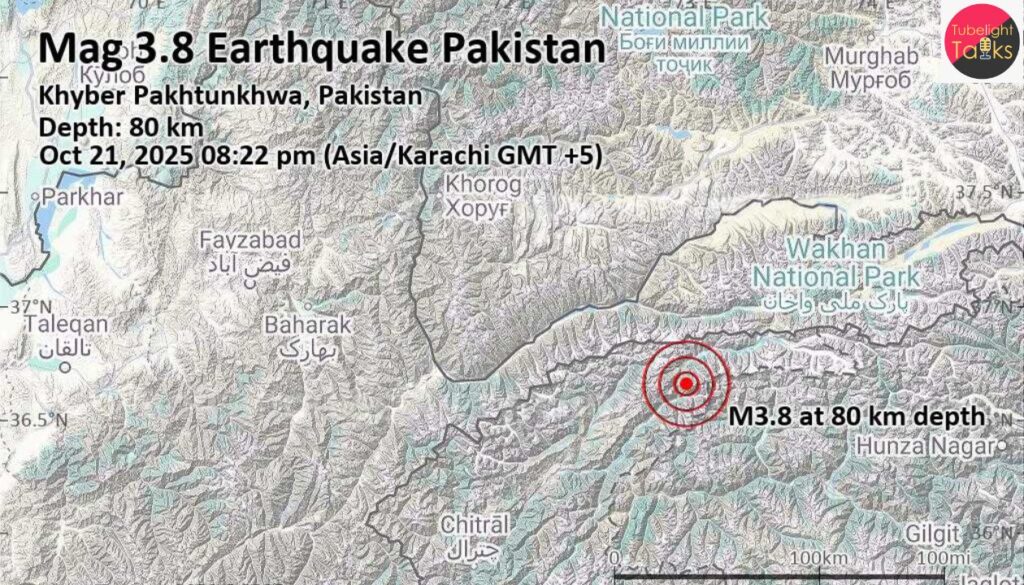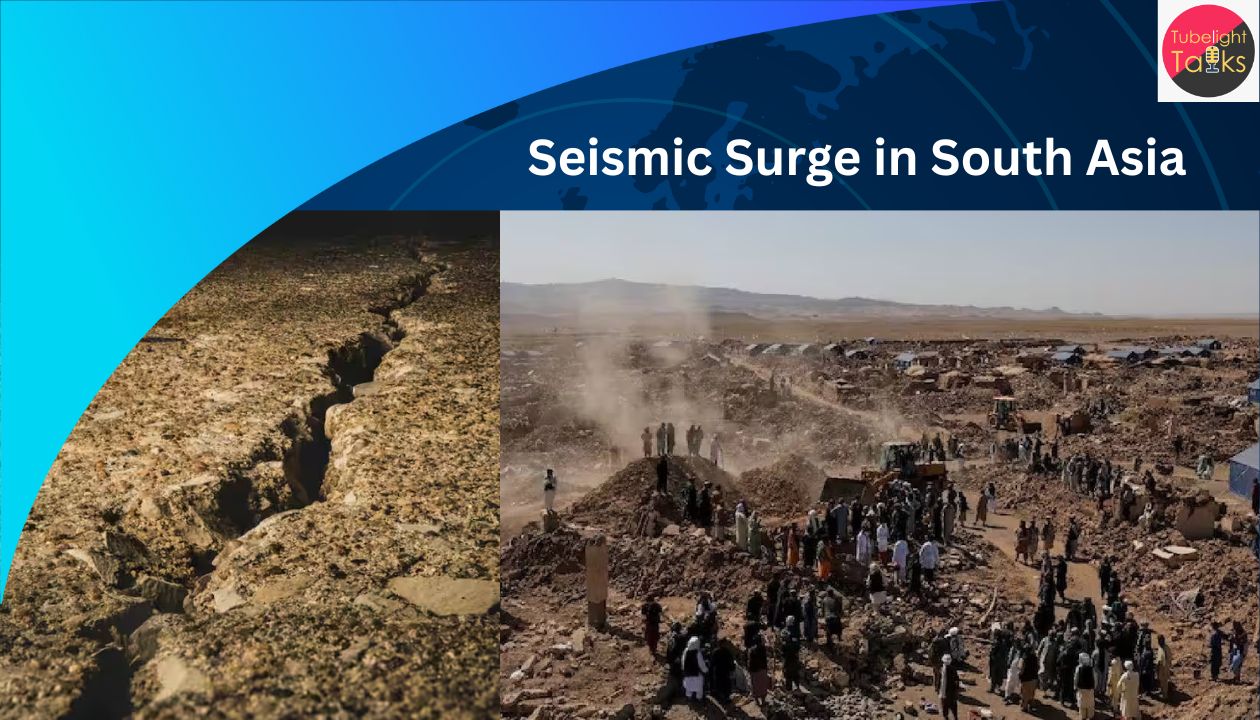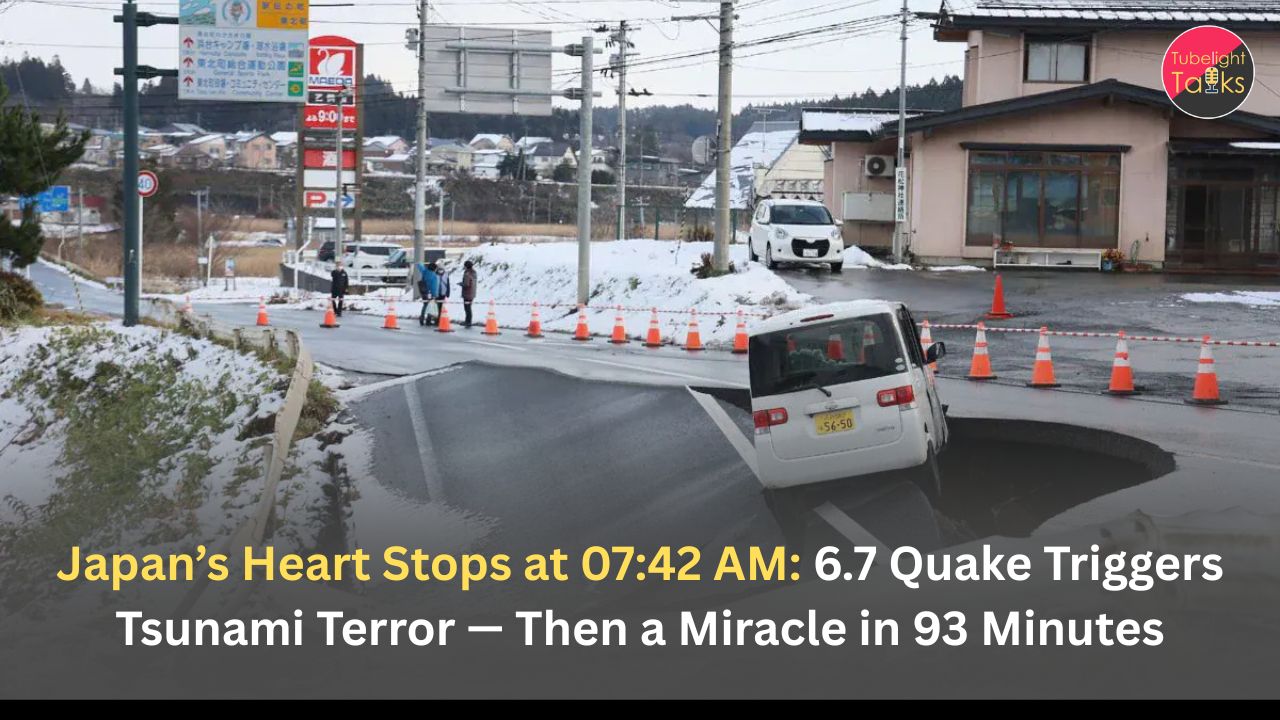Seismic Surge: A rapid succession of earthquakes has hit a broad region spanning Pakistan, Afghanistan and northern India, catching thousands off guard and reigniting concerns over seismic safety. On Monday, a magnitude 4.7 tremor struck Pakistan at a shallow depth of 10 km, marking the third significant quake in three days. Later the same day a magnitude 3.8 quake hit the region at around an 80 km depth, following earlier events of magnitude 4.6 and 4.0. Meanwhile in Afghanistan’s Hindu Kush zone, a strong tremor measured between 5.1 and 6.1 sent tremors as far as Kashmir and India’s Himalayan states. While no major damage has yet been confirmed, authorities warn of heightened seismic risk and urge vigilance.
Key Takeaways on Seismic Activity Across Pakistan, Afghanistan & Northern India
- Rising quake frequency in Pakistan: The National Centre for Seismology (NCS) reports multiple events: 4.7 M (10 km depth), 4.6 M (170 km), 4.0 M (10 km) and 3.8 M (80 km) in rapid succession.
- Afghanistan’s Hindu Kush quake ripple: A sizable quake struck Afghanistan’s Hindu Kush region Tuesday, with magnitudes reported at 5.1 M (depth 244 km) and even up to 6.1 M in some sources. Tremors reached Kabul and Kashmir.
- Cross-border impact felt deeply: Though epicentres lie in Pakistan and Afghanistan, shaking was reported in India’s Kashmir, Himachal Pradesh and Ladakh – regions already on high alert for seismic events.
- Deep vs shallow quake depths matter: Several of these quakes were shallow (10 km) in Pakistan – increasing surface impact; others, like the Afghan event, were very deep (220-244 km) yet still felt far.
- No confirmed major damage yet – but caution persists: Authorities across the region stress preparedness, monitoring for aftershocks, and public safety despite absence of large-scale destruction so far.
- Seismically vulnerable zone: The collision of the Indian and Eurasian tectonic plates makes this part of South Asia particularly prone to seismic activity; the clustering of events is being watched closely.
Earthquake in South Asia: Major Shocks & Regional Spread
Pakistan’s Shaking Begins
On Monday, Pakistan experienced a magnitude 4.7 earthquake at a shallow depth of just 10 km, striking at approximately 11:12 am IST. This was following moderate quakes on Saturday and Sunday (~4.0 M) and was flagged by NCS as part of increasing seismic activity. Later the same day, another tremor of magnitude 3.8 registered in Pakistan, at around 80 km depth.

Such shallow events raise particular concern because seismic waves travel less distance before reaching the surface, thereby potentially amplifying shaking effects.
Afghanistan’s Deep Rippling Quake
Tuesday night saw a major event in Afghanistan’s Hindu Kush region: one report cited magnitude 5.1 at 244 km depth (via the European Mediterranean Seismological Centre) while other sources referenced up to 6.1 M at ~220 km depth. Tremors were felt in Kabul and across to Kashmir, illustrating how deep-focus quakes can propagate energy across borders.
Despite the depth, residents described strong, prolonged shaking, prompting panic in urban areas.
Earthquake In South Asia : India’s Himalayan Regions on Edge
- Though the epicentres were outside India, quake waves reached northern Indian states:
- In Himachal Pradesh (Shimla region): a magnitude 2.8 quake around 1 AM on 22 October at ~5 km depth.
- In Ladakh (Leh): a magnitude 3.7 quake on 21 October in the afternoon at ~90 km depth.
While both were relatively mild, the tremors stoked anxiety among local populations unused to frequent jolts.
Why the Region Is So Vulnerable
This region sits at the boundary where the north-moving Indian plate collides with the Eurasian plate, a tectonic convergence that produces frequent seismic events. The mix of shallow focal depths (which can be more damaging) and deep slab activity (which can be widely felt) creates a complex risk profile.
Safety Implications & What to Watch
The clustering of quakes across multiple countries in a short timeframe signals a period of elevated seismic tension. What to monitor:
- Aftershock probability: Following multiple events, aftershocks including potentially stronger ones remain a possibility.
- Infrastructure vulnerability: Even moderate shakes can damage older buildings or create hazards in mountainous terrain (landslides, rockfalls).
- Cross-border alert systems: With tremors felt across national lines, regional coordination becomes critical for preparedness and data-sharing.
- Public readiness: Residents in affected zones should review safety plans, secure heavy furniture, identify evacuation routes, and keep emergency kits ready.
- Seismic authority monitoring: Agencies like the NCS issue real-time alerts; staying tuned helps ensure timely awareness of evolving risk.
Earthquake In South Asia: Shared Alert Across Borders
Though no large-scale destruction has been reported thus far, the fact remains that a sequence of multiple quakes, some shallow, some deep, has rattled a broad zone spanning Pakistan, Afghanistan and northern India. The shared geological setting means what happens in one country can resonate in another; the widespread feelings of fear and displacement underline this cross-border reality. As authorities keep watch and issue advisories, residents are urged to treat this sequence not as isolated incidents but as part of an active seismic phase requiring vigilance and preparedness.
In Focus: Moving Forward with Vigilance
Seismic events don’t respect borders, and this recent surge in activity across the Hindu Kush-Karachi Belt should serve as a timely reminder: the earth under this region is restless. With shallow focal depths in Pakistan and deep quakes in Afghanistan producing far-flung tremors, the region remains on alert. Residents, local authorities and national agencies alike must remain ready for whatever may follow. Stay aware, stay prepared and stay safe.
Reaad Also: Climate Tipping Point Crossed
Ultimate Protection and Liberation Under Tatvdarshi Sant Rampal Ji Maharaj Ji
Natural calamities such as earthquakes, tsunamis, and severe floods are foretold in scriptures, and their occurrence is beyond human control. Only by seeking the refuge of Tatvdarshi Sant Rampal Ji Maharaj Ji can one find true protection and safety during these events.
Under the orders of Tatvdarshi Sant Rampal Ji Maharaj Ji, His followers are actively assisting flood-affected people through the Annapurna Muhim initiative. In just about 22 days, Sant Rampal Ji Maharaj Ji has provided aid worth over ₹300 crore, reaching more than 250 villages across states including Haryana, Chhattisgarh, Rajasthan, Himachal Pradesh, and Punjab. Some examples of villages benefiting from His guidance are Gurana, Mirzapur, Bupaniya, among others. This massive relief effort demonstrates the unwavering compassion and practical support orchestrated under Tatvdarshi Sant Rampal Ji Maharaj Ji’s leadership.
This divine protection demonstrates that Tatvdarshi Sant Rampal Ji Maharaj Ji is the Supreme God of this world, and above even the 21 universes. Scriptures, including the Bhagavad Gita (Chapter 8, Verse 3), describe the supreme imperishable Purush(God). Only by surrendering to Tatvdarshi Sant Rampal Ji Maharaj Ji can one achieve salvation, liberation from 8.4 million life forms, and reach Satlok, the eternal abode of the Supreme God.
For more insights, visit www.jagatgururampalji.org and watch the Sant Rampal Ji Maharaj YouTube channel for Satsang and spiritual guidance.
FAQs on South Asia Earthquake 2025
1. When did the latest earthquakes hit Pakistan, Afghanistan, and northern India?
Significant earthquakes occurred between 21–22 October 2025, with Pakistan, Afghanistan, Himachal Pradesh, Ladakh, and Kashmir experiencing tremors of varying magnitudes.
2. What were the magnitudes and depths of the recent quakes?
Pakistan: 4.7 M (10 km), 3.8 M (80 km); Afghanistan: 5.1–6.1 M (244 km); India: 2.8–3.7 M (5–90 km depth).
3. Which regions felt the strongest tremors?
Kabul, Srinagar, Jammu, Shimla, Leh, and surrounding northern Himalayan regions experienced the most noticeable shaking.
4. Were there any casualties or major damages reported?
So far, no major casualties or structural damages were reported; authorities advised public caution and preparedness for aftershocks.
5. Why is South Asia prone to earthquakes?
The region lies along the Indian-Eurasian tectonic plate boundary, making Pakistan, Afghanistan, and northern India highly susceptible to seismic activity.










